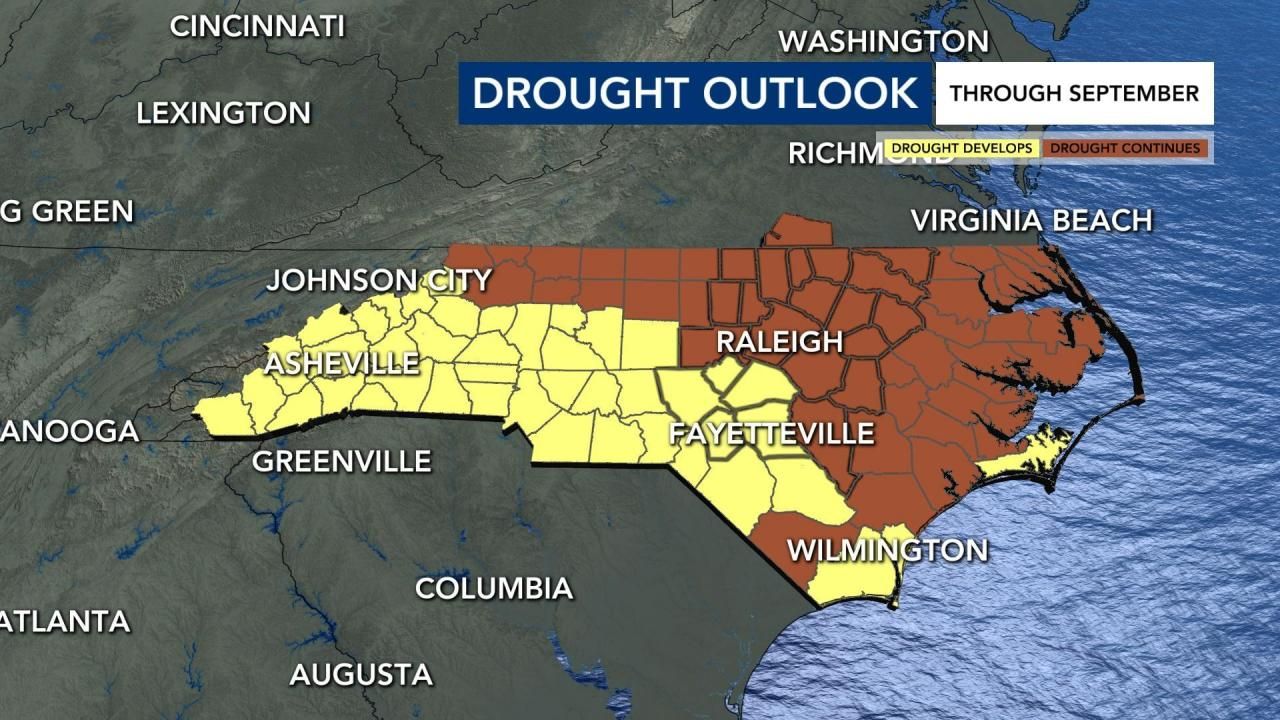Drought expected to continue through summer in North Carolina, NOAA'S Climate Prediction Center predicts

A combination of excessive heat and sporadic storms has left us high and dry in North Carolina. As of July 4, 75% of the state is under a moderate drought.

Although rain chances will rise later this week, the long-term outlook isn’t as optimistic regarding our drought.
NOAA’s Climate Prediction Center shows drought persisting across much of the state. That’s what you see in the brown shaded counties.

"In the yellow, that’s where drought is poised to develop," said WRAL meteorologist Chris Michaels. "We’re already close in those areas."
When you zoom in closer to home, the outlook is even more pessimistic.

So, what gives?
La Niña is likely. This refers to cooler-than-average ocean waters off the coast of Peru. You may think that only affects the Pacific, but that’s not the case.
You know the analogy, “A butterfly flaps its wings?” That’s sort-of what happens here. This cooling refers to more troughing (storms) in the western half of the U.S.
In the eastern U.S., we tend to see more ridging of high pressure. This means more heat, more sun and less frequent storms.

The lack of storm systems and wind shear in the Eastern U.S. is what will likely allow for more tropical systems in the Atlantic Basin. That’s why NOAA, N.C. State and Colorado State University have all issued a more active-than-normal season.
"It’s impossible to predict weeks out if a tropical system will hit our area," Michaels said. "But if one does, it could potentially reduce the threat for ongoing drought into the fall."










